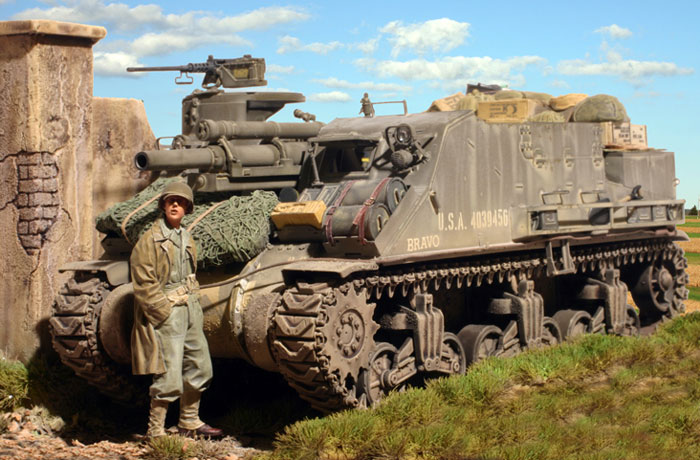Academy's new kit of the M7
105mm HMC comes nearly two decades after the Italeri kit.
Academy attempts to portray an earlier configuration of the
Priest compared to the Italeri kit which depicts the less
common 1944 production version. Unfortunately, the Academy
kit is a mish-mash of early 1942, intermediate 1943, and
late 1944 production features.
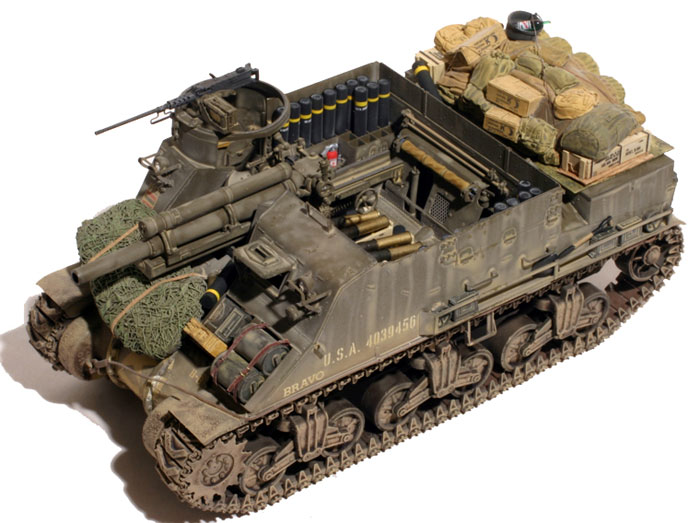
On the good side, Academy has fixed the dimensional problems
with their M3 Lee medium tank suspension, and have
generously provided two sets of outer bogie covers. This
will prove useful to anyone contemplating a correction of
their earlier M3 kit. Quite honestly, this feature alone
makes the kit worthwhile as it provides the first decent set
of early M3-style medium tank suspension bogies in plastic.
Not to go go too giddy in delight, the bogie assembly is
still sloppy, with a fair amount of filling needed on the
top of the bogie. The track is stiff vinyl and not up to
current standards. The kit also provides the "M4" heavy
bogie assembly and both spoked and stamped road-wheels, so
the kit is very useful if for no other reason than as a
source of Sherman suspension bits.
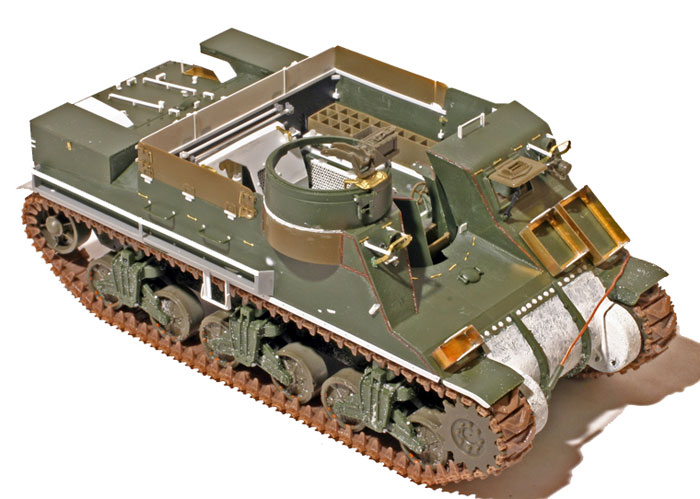
The lower hull provides a proper riveted configuration and a
typical three-piece differential housing. The differential
housing is OK, though without the characteristic casting
marks.
The upper hull is a mixed bag depicting the rare initial
configuration without the vent covers on the top engine
deck, and the initial rear plate without the cut-out for the
exhaust stubs. This configuration was limited to the first
hundred or so production vehicles, some of which may have
been rebuilt with vent covers prior to dispatch to the
British 8th Army in North Africa. In the event, this
configuration is extremely rare, which means that for most
vehicles it will be necessary to cut the rear plate and add
the vent openings and covers on the back deck for the vast
majority of 1942-43 production M7. The kit provides the
standard top-opening stowage bins on the rear hull top, not
the initial style with side opening doors compatible with
the early hull configuration. The method of attaching the
front and rear fenders is not ideal especially considering
the poor detail on both components.
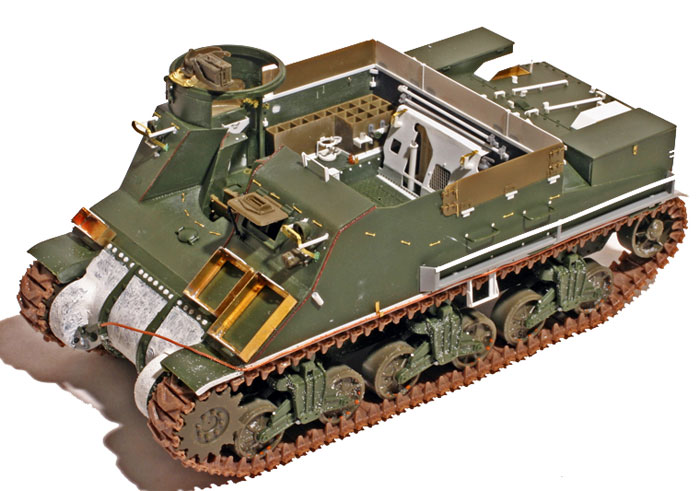
The fighting compartment interior is a mixed bag. Academy
has changed the firewall to the early/intermediate bulkhead
style. Unfortunately, the detail is very poor, especially
the cover over the oil radiators. The driver's compartment
is better than the Italeri kit and provides a better
three-piece transmission. The rest of the interior,
unfortunately, appears to have been inspired by the Italeri
kit and not by careful research. The stowage configuration
is wrong in many respects. For example, the driver's
compartment has the later style instrument panel and misses
most of the other stowage typical of either early or
intermediate configurations. The configuration on the right
side shows the 200 round MG ammo stowage of the 1944
production vehicles, not the 100 round stowage of the
1942-43 vehicles. The kit comes with a nice assortment of
105mm ammunition transport tubes, unfortunately they are
molded in a simplified fashion so that that Academy has
skipped depicting the typical "egg-carton" stowage
configuration of the ammo bins. Academy has introduced some
modest improvements to the 105mm howitzer such as a
one-piece slide mold barrel and gun tube. On the other hand,
the breech and breech-block remain the simplified
configuration as shown in the old Italeri kit. Sad to say,
this kit will do little to enhance Academy's reputation for
accuracy after a rash of mediocre kits like their M3 Stuart,
M3 Lee, and M551 Sheridan.
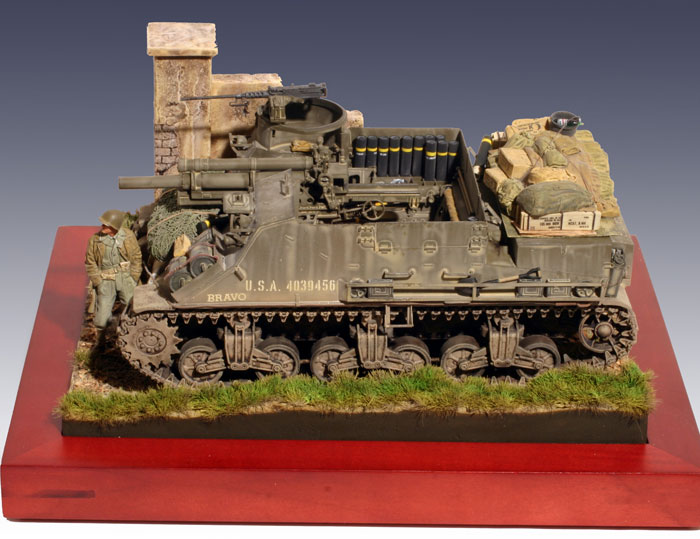
I had an old Italeri M7 kit in my basement which I was
planning to convert into a 1943 configuration M7, so I
sacrificed this for many parts to upgrade the Academy kit
including much of the 105mm howitzer as the old Italeri kit
has sharper details. I recently finished a Tasca M4A1 and
had a buch of suspnesion parts left over such as roadwheels,
ideler wheels and drive sprockets, and I used these as the
detail is better than the Academy kit. I spent a lot of time
re-detailing the fighting compartment. The rear stowage is
primarily from the excellent Blast resin after-market set,
modified to fit this kit. The crewman is the recent Alpine
release, and it is a first-class bit of sculpting and
molding. I configured my model to depict one of the 14th
Armored Field Artillery, 2nd Armored Division vehicles in
France in 1944 with their characteristic additions such as
the hull stowage racks. A detailed article on this project
will appear in Military Modelling magazine along with an
accompanying piece on early British use of the Priest by
Peter Brown.

